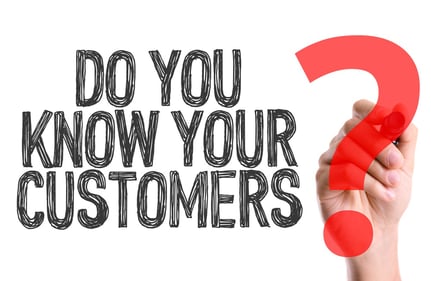So your software start-up business has finally raised your capital investment funds and capital... Now what is the best approach to ensure success and ROI?

What prompted me to write this article is that this year alone, we have been approached by many aspiring small entrepreneurial first time start-up founders in Australia with a great vision to be the next star tech multi millionaire with a great idea and concept for app development. From a Go to Market and feasibility perspective, much more time and conscious planning of a sales and marketing plan could be developed first and knowing your target market with a strong customer value proposition. The financial elements of your sales revenue and profit model particularly with Software as a Service or subscription models to scale in say two sided marketplaces need to be considered for B2B and B2C applications.
Read about a selection of our business owners examples we have spoken to below in hospitality, retail, legal services, trades, telecoms.
Typically they have worked in the technology field, banking or finance, hospitality or trades sectors, and have clearly seen a need for doing things differently or something which has frustrated them as an end user in this digital era.
So why not build a mobile app? We have seen successful apps like Tinder for dating, Uber for car ride sharing, and many other disruptive business opportunities and approaches.
There has been more Australian success stories such as Canva and Atlassian and well as Australian based start-ups of recent time, however a reality check highlights many failures also in small business that may not be highlighted with their challenges and how to overcome them.
What concerned me in talking to these business owners in early stage development, many of which who have continued working their day job, or those who have 100% committed to this idea and own self-funded capital, is that many have started building their business without many key elements that any start-up business should consider from a financial and commercial perspective.
In this customer centric and experience environment, it really surprising me why many aspiring app designers start with features and functions first before understanding who their customer is and if this is a commercial need to solve their challenge and if there is in fact a business case for their development.
The maturity of having some commercial acumen or seeking advice as an investment is an important first step. Some basic checklists should be considered first before expending any self-funded cash or investment capital cost.
Two important factors are cashflow and cashburn when you have limited funding to kick start your business. Whether it's your own capital, crowdsourced, private or public funding sources, ROI and accelerated sales growth is needed in terms of new customers, actual revenue streams and cashflow considerations.
We typically recommend a Digital Readiness Assessment or a Business Growth Assessment to help gain an understanding of the business objectives and maturity before entering into the detail design or functional building blocks. Read our previous blog on 3 key elements on how a Digital Readiness Assessment can help clarify the right plan for you.
Some start-up and new venture scenarios we have heard from this year:
Owner A: Hospitality Application
The two owners had come from a hospitality background and they wanted to build an app which allows restaurants and cafes to match and fill empty tables during both days and evenings, with a fee charged based on percentage of spend to onboard the vendor. Despite sharing the market with Deliveroo, Foodora and Uber Eats, they claimed their model was different.

The app had been built and tested already, and they wanted to focus on building the B2B marketplace to onboard customers and launch in Europe and Australia. The challenge was both marketing and sales to onboard an initial 200 customers.
It seemed to me that they had taken a back to front approach, by building the application first, before assessing if there is a valid market opportunity and developing the app to suit the market.
Upon an initial consultation, it was apparent that bootstrapping this application development cost resulted in missing key plans on the commercial go-to-market front, including:
- Marketing and sales market analysis for each country
- Profit and revenue model as a subscription model
- Business strategy - how to scale and sell directly or via a referral/distribution model.
We presented an offer to look at developing their GTM strategy, however this wasn’t in their current budget as most of the funding was invested in the application development side, and therefore they could not proceed at the time.
Owner B: Industrial Equipment Hiring Application
Four business partners, all highly educated and ex-engineers, had built a two-sided marketplace B2B app to rent industrial equipment from vendors who had availability, and their platform facilitates a self-service rental catalogue listing and booking engine to connect vendor and renter.
Originally they came to us with an interest in digital marketing assistance, and upon looking at their website and type of content present, it wasn’t sufficient to take a customer centric approach as information about their target market or ability to collect customer data was unclear.
We questioned whether their pilot stage app had been tested, but they were looking to raise more private investor capital. We asked to see their pitch deck and hear about their sales and marketing plan. While there was an initial interest to engage independently first to help with their pitch deck, the subsequent response was to wait until they had raised the funds, then they can consider a marketing and digital initiative to get this off the ground.
An offer to develop a basic marketing high level strategy to include in their investment pitch deck was declined to help them secure the funding and demonstrate forward planning.
I asked how confident they felt about raising private capital and what approach they planned to take, and received a response which was unsure…
Owner C: Market Food Truck Application
A business owner saw the opportunity to setup a market food truck/vendor and customer app.
An initial consultation garnered interest from the venue event organiser. Capital was limited to build the app (to test stage) using an offshore web development team, and this was the first step to customise the app to get one initial customer to fund it.
After six months, I reconnected with the business owner and learned that due to the GDPR and tightening in data privacy using SSO with Facebook login accounts, the application development project couldn’t proceed due to many backend development changes and cost, and also the business partner had a change of course with his view.
The commercial and sales qualification of the initial opportunity with the market hadn’t been sufficiently completed firstly.
The actual go-to-market approach hadn’t been thought about because the functional design was launched first to solve an immediate idea of the perceived problem which wasn’t verified.
Owner D: Billing Software Cloud SaaS Platform Application
A serial entrepreneur in the ANZ region has built and sold multiple tech start-ups previously. The latest venture has involved raising some capital funding directly at the US market and hiring a first team for technical and initial sales/SDR resource. 
We proposed a go to market strategy engagement and market feasibility study for the Australian market, with our own network of consultant contacts and opportunities to explore.
When capital is raised from angel investors the drive is to achieve value for shareholders. The dependency is on cashflow for engaging this project, however a scattergun approach without an integrated strategy isn’t assisting to drive traction and capitalise on opportunities here in Australia. The initial capital raised required a success model based on penetrating into the US market first.
The SaaS profit model for Telco/ISP and utilities as a pure play solution needs to consider the actually profitability and market positioning as part of a GTM targeted approach.
Overall in analysing the SaaS revenue model, I could see there being some challenges in their fixed percentage of revenue subscription model to be profitable.
Over 12 months later, since the initial conversation, the company is looking to raise another round of funding to sustain their current operations for traction developed in the US but not for Australia yet in a structured approach. It has been more of an ad hoc approach without investment in a solid business strategy and focus on ROI outside of their focus on the US market and shareholder expectations.
Owner E: Legal Software Application
A prominent lawyer in Melbourne spent over $250K to build an online legal practice platform software over three years, to turn and sell off the IP and foundation.
His intention was for the purchaser to take it to market and commercialise it, with some software licence and maintenance projections to sell globally to be compliant for all jurisdictions.
The request was for me to assist in pitching and presenting to HK prospective buyers but the founder had no sales experience.
The review of the business case and financial projections are only hypothetical with no real paying customers yet only a couple of small legal beta trial instances. There were some challenges I could see with this in developing a sustainable revenue model and especially the market feasibility with most of the software market moving to a SaaS – Software as a Service Cloud model.
Summary of challenges and considerations to make:
Mobile application developers – two-sided marketplace challenges
The cost of building an app warrants some business planning around the application first and customer profiling around usability and customer experience and processes for two-sided marketplaces.
How do you market to onboard users from both sides of the app?
What dependencies are on your third party open source apps like using Facebook or Google to login or sign up? With policy changes around data privacy for third party login and user data sharing, how does this impact on your business model if a few things change both on B2B vendor or end user side?
How do you attract loyalty digitally from not just initial sign up but actual subscriber usage of your app and continued feedback from customers with marketing and support channels?
Tip: Determine your ideal customer profile for each marketplace supplier/customer,
whether it’s B2B or B2C.

Part Two of this blog series contains practical guidance and tips around capital raising, and what to do with the funds to achieve a solid ROI both for your business and investors.
Feel free to contact us for an initial discussion on how we can help you and your business, from start-up to growth mode, at info@alchemiseconsulting.com or @alchemise_cons or call our office on +61392255022.


